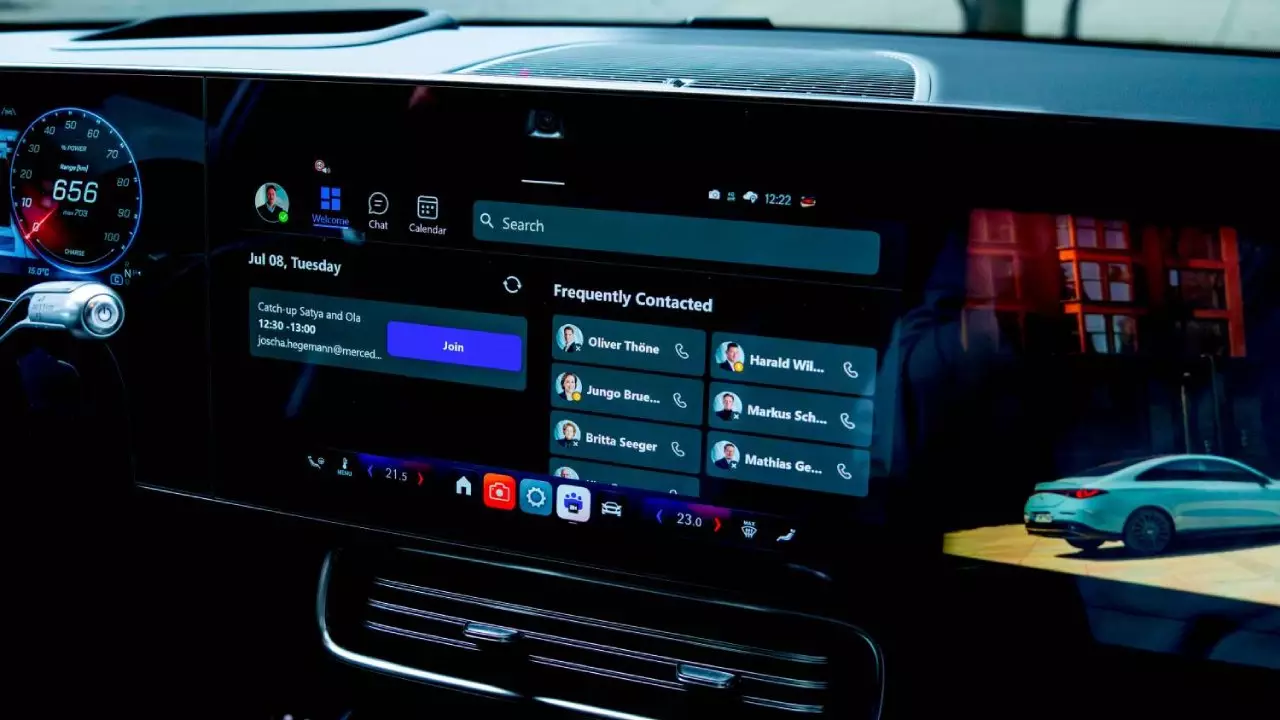In recent years, the automotive industry has undergone a revolutionary transformation, transitioning from basic transportation to complex digital ecosystems. Mercedes-Benz’s latest updates exemplify this shift, pushing the boundaries of what is possible within a vehicle. The integration of tools like Teams and generative AI reflects a strategic move to merge professional productivity with luxury travel, making the car not just a means of transport but a mobile command center. This transition underscores an essential truth: connectivity, when executed thoughtfully, can elevate user experience and redefine expectations of safety and utility in transit.
However, the very nature of these advancements invites scrutiny. While innovative features like live in-car video streams symbolize technological progress, they also pose questions about practicality and safety. The premise of enabling drivers to broadcast their image during movement seems, at first glance, more of a status symbol than a genuinely valuable tool. How often do drivers truly benefit from such streams? Is the added convenience worth potential distractions? These are critical questions that challenge the industry to balance innovation with responsible design.
Safety or Showmanship? A Closer Look at the In-Car Video Feature
The most contentious aspect of Mercedes’ new update revolves around live video sharing while driving. The company claims that safety remains paramount, highlighting automatic deactivation of the video feed when the vehicle is in motion. Yet, the real concern lies in the psychological and behavioral implications of having a camera focused on the driver. Even with safety measures in place, there’s an inherent risk: visual engagement can inadvertently lead to distraction. Drivers might find themselves glancing at the camera, or worse, reacting to images or sounds not intended for their attention during critical moments on the road.
Furthermore, the potential for misuse or unintended exposure raises ethical issues. Could a driver inadvertently reveal personal details or become distracted by their own image? In an age where digital footprints are relentlessly scrutinized, allowing a live video feed from a moving vehicle is an experiment in navigating privacy rights versus corporate innovation. If the primary goal is to demonstrate technological prowess or boost the image of the brand, at what point does the pursuit of prestige overshadow the fundamental priority of road safety?
The Broader Role of Connectivity and AI in the Modern Automotive Experience
Moving beyond the controversial video feature, Mercedes emphasizes the broader utility of its connected ecosystem. The integration of quick access to upcoming meetings, calendar synchronization, and streamlined messaging through upgraded Teams features exemplifies the company’s commitment to making the car a productive space. Yet, these enhancements also reflect a core tension: how to ensure that productivity tools enhance rather than hinder safe driving.
Incorporating voice-controlled AI, especially with the addition of Microsoft 365 Copilot, is arguably the most promising innovation. This AI-powered assistant can help drivers prepare for meetings, retrieve critical information, and manage workflows entirely hands-free. From a technological perspective, this is a bold leap into the future, where vehicles transcend their traditional role and become intelligent companions. However, the reliance on AI raises questions about accuracy, reliability, and the potential for over-dependence. AI’s track record in real-world scenarios is far from flawless, and in the unpredictable environment of driving, even small errors could have serious consequences.
Moreover, introducing generative AI into a vehicle’s cockpit blurs the lines between entertainment, work, and safety. It presents an optimistic yet arguably naive view of how seamlessly AI can operate in real-time, high-stakes situations. If a system were to falter or misinterpret a command, the repercussions could range from minor inconveniences to catastrophic incidents.
Reimagining Automotive Innovation with Critical Perspective
While Mercedes’ progressive features exemplify the industry’s relentless pursuit of innovation, a critical perspective reveals underlying risks. The convergence of professional tools, AI, and driver-focused cameras may seem groundbreaking, but it must be tempered with cautious consideration of safety, privacy, and practicality. Too often, technological advancements are propelled forward by the desire to impress rather than a thorough understanding of real-world application.
As consumers and industry watchers, we ought to scrutinize whether these features genuinely enhance the driving experience or merely serve to showcase brand ingenuity. The balance between progress and prudence should be at the forefront of automotive innovation. Otherwise, the risk remains that these technological strides will overshadow the fundamental principles of safety and human-centered design, turning vehicles into showcases rather than reliable, safe transportation solutions.
In the end, true progress in automotive technology will be marked not just by the inclusion of new gadgets, but by a deep understanding of how these tools impact driver behavior, safety, and privacy. It’s time for the industry to be as critical of its innovations as it is ambitious, ensuring that progress serves humanity first and foremost.

